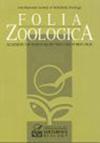How sunrise and weather affect timing of rooks' (Corvus frugilegus) morning departure from the winter communal roost
Q2 Agricultural and Biological Sciences
引用次数: 1
Abstract
Abstract. The pattern of morning departure of rooks (Corvus frugilegus) from large communal roosts in winter is regular though it is affected by several environmental (weather) variables. A total of 151 records of the morning departure of rooks (and associated jackdaws, Corvus monedula) from two large communal roosts in the Czech Republic during the years 1966 to 1974 were analyzed. On average, the birds departed 36 min before local sunrise and 1.5 min after beginning of local civil twilight. Light intensity was the leading factor that explained 60 % of variability of the departure time. Cloud cover 30 min before sunrise, being interrelated with the light intensity at local sunrise, explained 52 % of the variability. Less important but significant factors were several weather variables such as precipitation, relative humidity of the air, horizontal visibility (fog), snow cover, and air temperature. Two best predictive multivariate regression models for timing of the birds' departure involved factors: light intensity (that accelerated the departure) or inter-related cloud cover before sunrise (it delayed the departure), precipitation (delaying the departure), snow cover (accelerating the departure due to increased food demand), and horizontal visibility (fog delayed the departure). The two predictive multivariate models explained together 75 % of variability of the birds' departure in relation to beginning of local civil twilight.日出和天气如何影响白嘴鸦(Corvus frugilegus)早晨离开冬季公共栖息地的时间
摘要白嘴鸦(Corvus frugilegus)在冬季早晨离开大型公共栖息地的模式是有规律的,尽管它受到几种环境(天气)变量的影响。本文分析了1966年至1974年期间,捷克共和国两个大型公共栖息地的白头鸦(以及相关的寒鸦)早晨离开的151份记录。平均而言,这些鸟在当地日出前36分钟离开,在当地黄昏开始后1.5分钟离开。光强是解释出发时间变异60%的主要因素。日出前30分钟的云量与当地日出时的光强有关,解释了52%的变率。不太重要但重要的因素是几个天气变量,如降水、空气相对湿度、水平能见度(雾)、积雪和气温。两个最佳的预测鸟类起飞时间的多元回归模型涉及以下因素:光照强度(加速起飞)或日出前相互关联的云量(延迟起飞)、降水(延迟起飞)、积雪(由于食物需求增加而加速起飞)和水平能见度(雾延迟起飞)。这两种预测的多元模型共同解释了75%的鸟类离开与当地黄昏开始有关的变异性。
本文章由计算机程序翻译,如有差异,请以英文原文为准。
求助全文
约1分钟内获得全文
求助全文
来源期刊

Folia Zoologica
生物-动物学
CiteScore
1.70
自引率
0.00%
发文量
0
审稿时长
3 months
期刊介绍:
Information not localized
 求助内容:
求助内容: 应助结果提醒方式:
应助结果提醒方式:


